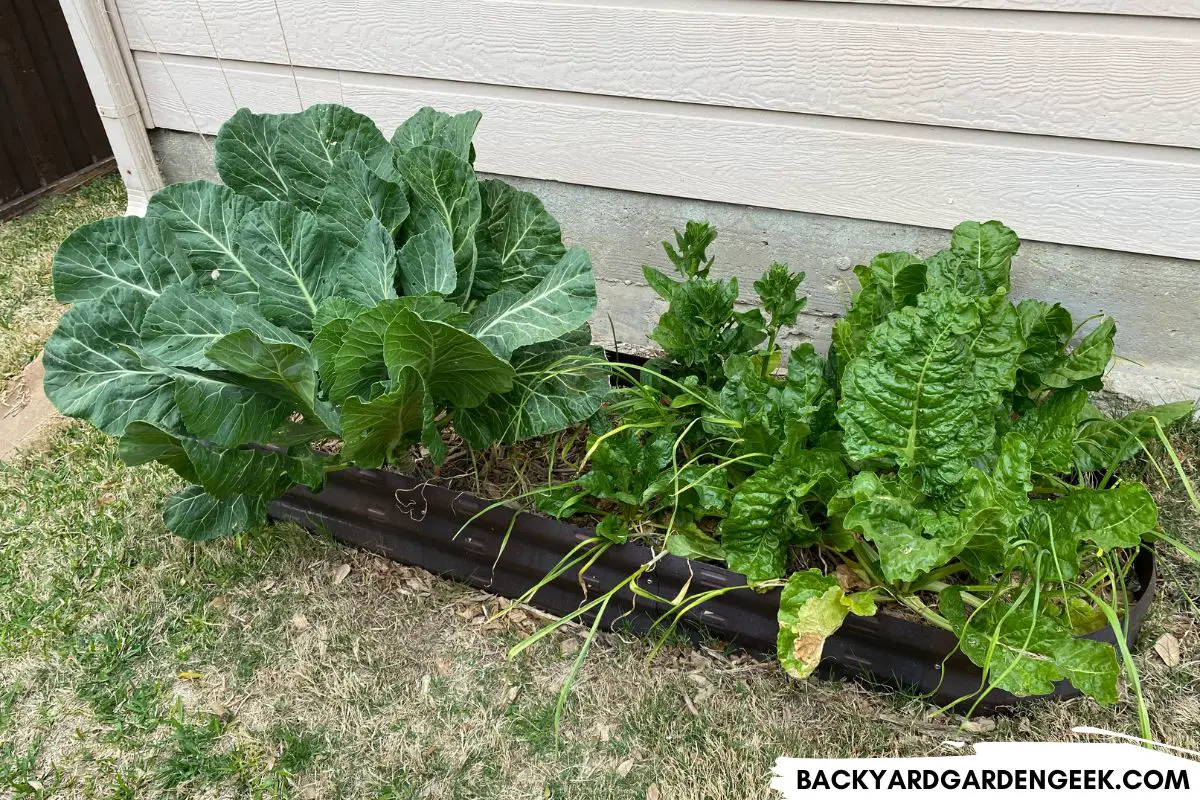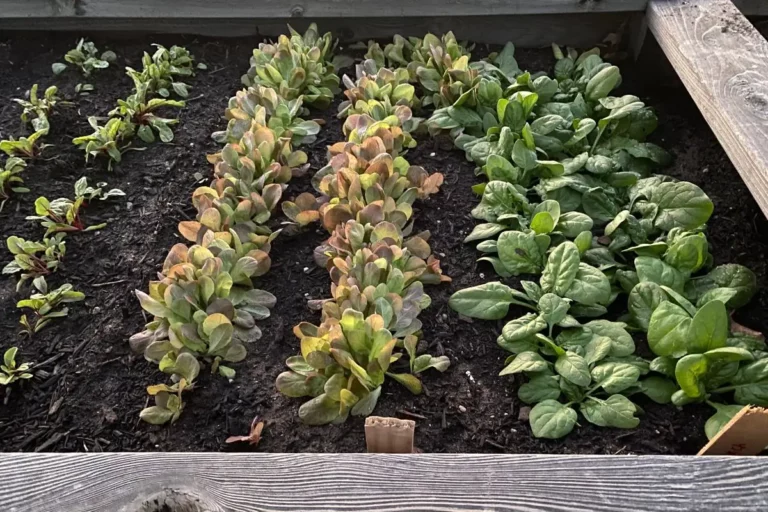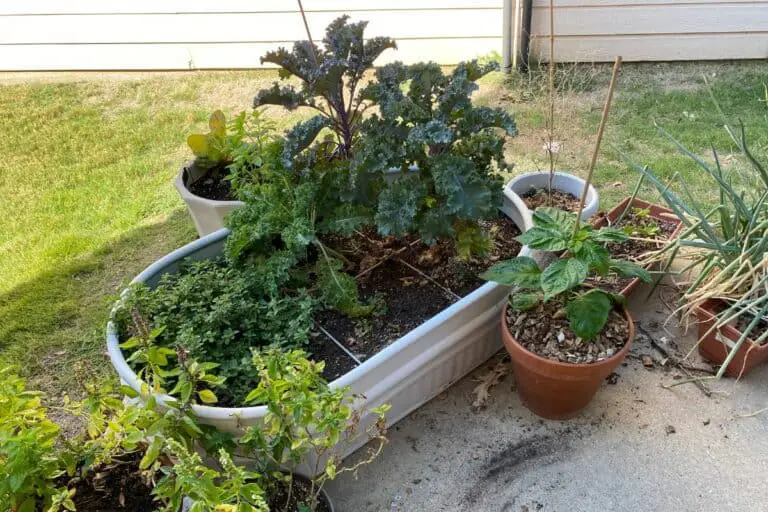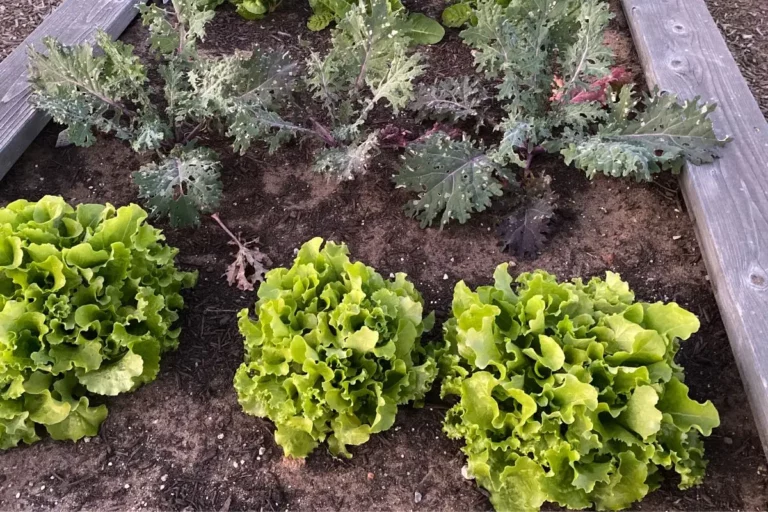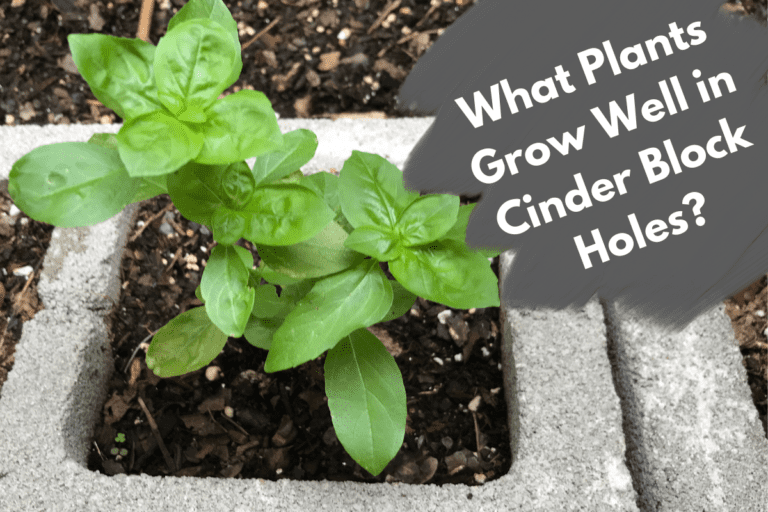12 Surprising Disadvantages of Raised Garden Beds
Raised garden beds are a great way to grow amazing veggies thanks to their many benefits such as improved soil quality, better drainage, and greater control over growing conditions.
However, there are also potential disadvantages and challenges when it comes to using raised beds that gardeners need to be aware of.
I’ve been gardening for nearly 15 years, and I love raised beds, but here are the disadvantages I’ve discovered over time.
The major disadvantages to gardening in raised beds are:
- Construction Confusion
- Installation Expenses
- Watering Requirements
- Drainage Problems
- Soil Requirements
- Soil Quality
- Soil Temperature Fluctuations
- Heat Susceptibility
- Plant Unsuitability
- Maintenance and Upkeep
- Replacement Costs
- Relocation Labor
In this post, I’ll explore these surprising disadvantages and provide tips and advice for avoiding them in the first place or managing them along the way.
I’ll also share the ten biggest mistakes to avoid when gardening in raised garden beds and answer the question of whether raised garden beds are worth it.
By the end of this post, you’ll have a comprehensive understanding of the potential challenges and rewards of using raised garden beds, as well as the tools you’ll need to grow healthy, productive plants in your garden.
Whether you’re new to raised garden beds or looking to troubleshoot some common problems and headaches, this post will provide valuable information to help you make the most of your backyard space!
What Are the Disadvantages of Raised Garden Beds?
I’ve written about the advantages of raised garden beds–and briefly noted some of the disadvantages–but in this article, I’d like to explore the disadvantages in more detail so that you can know ahead of time what kinds of challenges you’ll face if you decide to incorporate raised beds in your garden.
1. Construction Confusion
Raised garden beds can be a great addition to your garden, but figuring out which beds are best, which materials to use, where to put the beds, and how to build or install them can be a bit confusing at times.
It’s easy to get overwhelmed because there are just so many options out there. I mean, look at this Amazon list of raised garden beds!
You could spend the next hour searching for raised bed after raised bed. You can even build your own using wood, metal, bricks, or even concrete blocks.
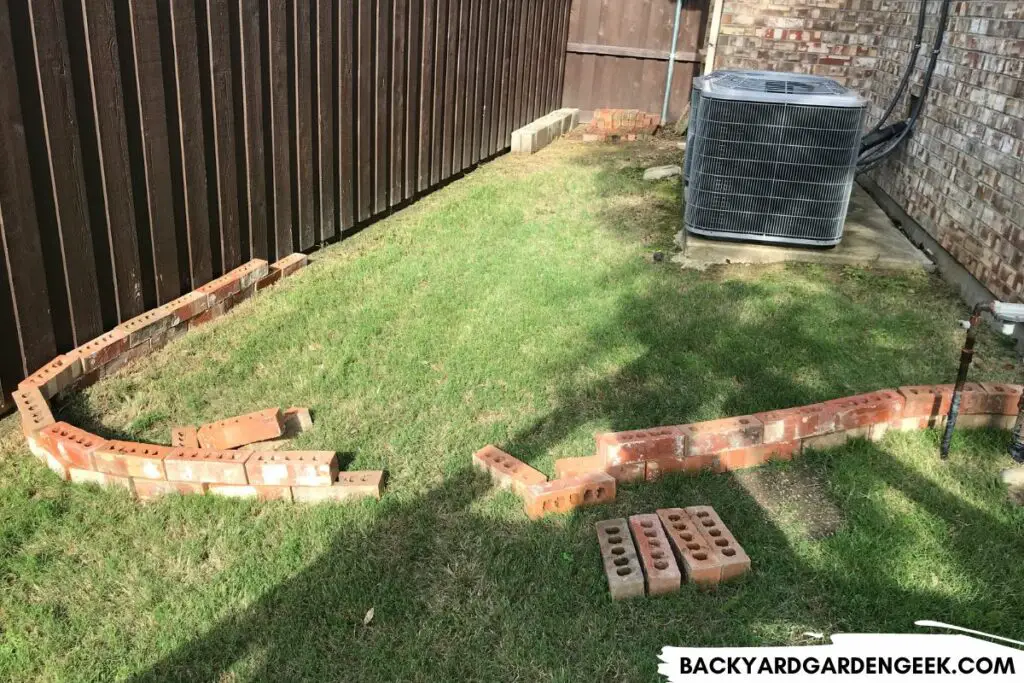
Of course, one of the biggest sources of confusion is figuring out which materials to use for your raised garden bed since there are all kinds of options available.
Each material has its own pros and cons, and it can be difficult to know which one to choose, so you’ll want to consider the size and dimensions of the bed as well as the location where you’ll be building or installing it.
Building or installing raised garden beds can be confusing for beginners. I built my first raised beds back in 2016, but I spent lots of time agonizing over the details. I also made mistakes back then that I’ll never repeat again.
Some gardeners might struggle with finding the right tools and equipment and may not be familiar with basic construction techniques.
To avoid construction confusion, it’s important to have a clear plan in place before starting your project. You’ll probably also be better off buying raised beds instead of building your own.
Make sure you understand the size and dimensions of the bed you want to build or install, as well as the materials you’ll need. You may also want to consult some YouTube videos for further guidance.
By taking the time to understand the various options available and planning your project carefully, you can avoid construction confusion and design, build, purchase, or install raised beds that’ll provide years of productive gardening.
2. Installation Expenses
One of the biggest potential drawbacks of raised garden beds is the up-front costs involved in either building or buying them.
Depending on the materials you choose, gardening in raised garden beds can be much more expensive than traditional gardening methods.
If you opt for wood materials, for example, the costs can add up quickly.
Redwood and cedar are popular choices for raised garden beds due to their natural resistance to rot, but they can be expensive to purchase. Pine and spruce are more affordable options, but they won’t last as long as cedar.
Metal materials like steel or aluminum can also be expensive, and prefabricated raised beds can be even more so at the time of purchase.
Modular metal raised beds sold by retailers like Birdie’s, Olle, or Vego Garden are my favorites, but they can also be a costly investment. While they offer the benefit of being easy to install and customize, the price tag is going to be a shocker if you’re looking to buy several beds.
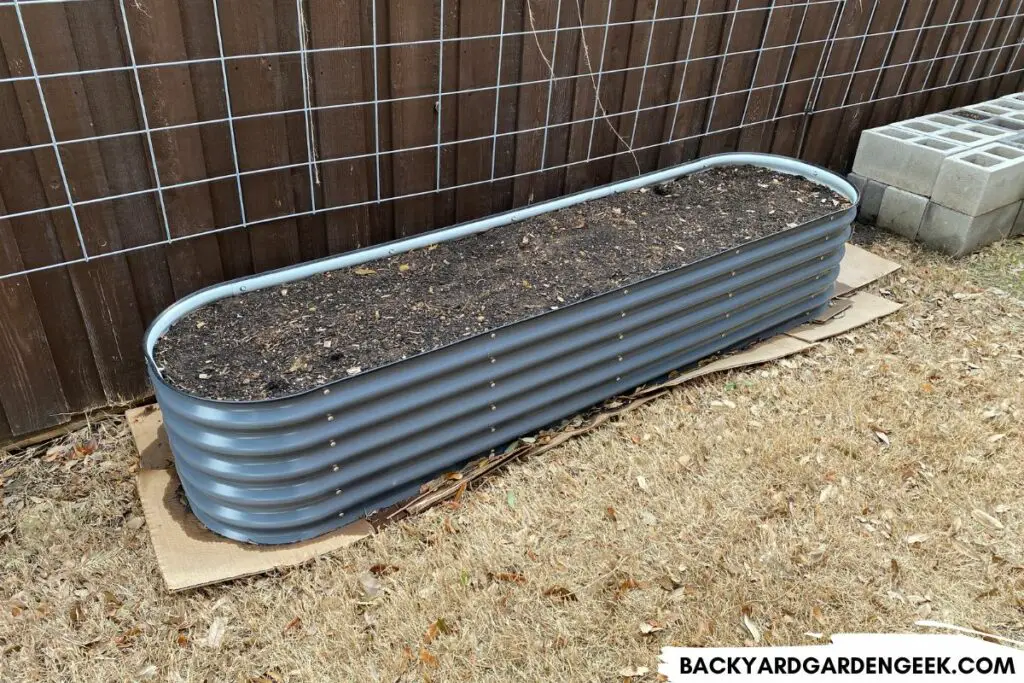
To save money on installation expenses, consider using salvaged or recycled materials for your raised garden beds. As I’ll discuss below, you can also use hugelkultur gardening practices to fill your raised beds with cheap, compostable materials like logs, branches, and leaves.
Finally, start small and build or install 1 raised bed at a time so that you can manage your expenses while learning to garden in raised beds.
3. Watering Requirements
Generally speaking, raised garden beds often require slightly more watering than traditional in-ground gardens since they tend to dry out faster.
This can be a potential drawback for gardeners, particularly if you need to water your beds each day using watering cans or if your beds are situated far away from your house.
Watering your raised beds manually can be time-consuming and physically demanding, especially if you have a large garden. To make the process easier, you can install a drip line or PVC watering system, which will allow you to water your garden more efficiently.
However, designing, building, and maintaining these systems can be time-consuming and expensive.
Another option is to have a faucet installed near your raised beds, which will allow you to easily water your plants with a hose. While this can be a convenient option, it requires additional time, effort, and expense to install the piping system.
Whatever you decide to do, consider using thick mulch in your raised beds to help retain moisture in the soil. Additionally, you can choose plants that are well-suited to your growing conditions and thus require less frequent watering.
4. Drainage Problems
Another potential drawback of raised garden beds is the risk of drainage problems, which can lead to root rot, fungal disease, and other issues.
Drainage problems can occur if you place your beds in an area of your property that collects too much water or if you fill your beds with poor or overly dense soil.
If your soil is too dense or compact, it may not drain well and can lead to saturated soil in your raised beds. This can cause root rot, which can be detrimental to your plants.
To improve drainage in your raised garden bed, you can add compost, perlite, or vermiculite. These materials will help to loosen the soil and promote more even moisture retention and drainage.
One more thing to consider: In wooden raised beds, soil that doesn’t drain well can increase the chance of rot. To avoid this, consider using redwood or cedar as they are more resistant to rot and decay and install your beds in an area of your property that’s not prone to oversaturation during rainy weather.
5. Soil Requirements

One of the potential drawbacks of raised garden beds is the cost of filling them with soil, particularly if you have large beds or multiple beds.
Bagged soil can be very expensive, and it can take a lot of bags to fill a single raised garden bed. This is why buying soil in bulk is typically a more cost-effective option.
However, bulk soil requires a truck or trailer to pick up. Most places will deliver it if you purchase enough, although they’ll charge extra for doing so, which will add to the overall expense of your raised beds.
To give you an idea of how much soil you’ll need for different sized raised beds, you should measure the height, width, and depth of your raised beds in feet, then divide that number by 27. That’ll give you the measurement in cubic yards.
Here’s a list of some popular raised bed sizes and how many cubic yards of soil you’ll need for each of them:
| Dimensions | Calculation | Soil Required |
|---|---|---|
| 2x4x1 bed | (2 x 4 x 1) / 27 = | .30 cubic yards of soil |
| 2x6x1 bed | (2 x 6 x 1) / 27 = | .44 cubic yards of soil |
| 2x8x1 bed | (2 x 8 x 1) / 27 = | .59 cubic yards of soil |
| 2x8x1 bed | (2 x 8 x 1) / 27 = | .59 cubic yards of soil |
| 2x10x1 bed | (2 x 10 x 1) / 27 = | .74 cubic yards of soil |
| 2x4x2 bed | (2 x 4 x 2) / 27 = | .59 cubic yards of soil |
| 2x6x2 bed | (2 x 6 x 2) / 27 = | .88 cubic yards of soil |
| 2x8x2 bed | (2 x 8 x 2) / 27 = | 1.18 cubic yards of soil |
| 2x10x2 bed | (2 x 10 x 2) / 27 = | 1.47 cubic yards of soil |
| 4x4x2 bed | (4 x 4 x 2) / 27 = | 1.19 cubic yards of soil |
| 4x6x2 bed | (4 x 6 x 2) / 27 = | 1.78 cubic yards of soil |
| 4x8x2 bed | (4 x 8 x 2) / 27 = | 2.37 cubic yards of soil |
| 4x10x2 bed | (4 x 10 x 2) / 27 = | 2.96 cubic yards of soil |
Filling up raised garden beds for the first time can take a lot of money, time, and soil. This is why hugelkultur is a great option for anyone building or installing raised beds for the first time (more on that below).
If you fill up your garden beds with cheap, compostable materials instead of expensive bags of pre-mixed soils, you can save money and improve the overall health of your soil over time.
6. Soil Quality
When it comes to soil quality, the soil you use in your raised garden beds will have a significant impact on the health and productivity of your plants.
If you fill your beds with poor soil or soil that’s too sandy or lacking in nutrients, your plants will struggle to grow and produce.
For example, if you decide to fill your raised beds with topsoil, please be aware that not all topsoils are created equal. Many commercial topsoils are nutrient-deficient and may not provide the necessary nitrogen, phosphorus, or potassium that allows your plants to thrive.
Additionally, topsoil often contains weed seeds that’ll sprout in your garden beds and cause headaches as time goes on.
I had this happen recently. I bought some topsoil to fill in a small hole in my lawn, and a few weeks later, I discovered to my horror that nutsedge was growing everywhere I’d placed the topsoil. I’m so glad I didn’t get that stuff anywhere near my raised beds!
One solution to this problem is to hugelkultur. Hugelkultur involves burying compostable materials such as logs, branches, sticks, leaves, and grass (among many others), then covering them in soil and letting them decompose over time.
As these materials decompose, they turn into rich, healthy soil, especially if you balance the addition of brown materials that’ll provide carbon (logs, branches, sticks) with green materials that’ll provide nitrogen (grass, leaves, kitchen scraps).

If you want to see exactly what I do when filling new raised beds–including chopping up a Christmas tree and filling most of a new raised bed with it!–check out these articles of mine:
- 9 Easy Steps to Build Raised Garden Beds on Your Grass Lawn
- 12 Reasons Why Vegetables Can Grow Better in Raised Beds
- 18 Best Materials to Put in the Bottom of Your Raised Beds
- 40 Cheap and Easy Ways to Fill Your Raised Garden Beds
To ensure that your soil is healthy and nutrient-rich, wait a few months after installing your beds, then get a soil test done by a local university extension office.
This will tell you about the soil’s pH levels and its NPK makeup–which stands for nitrogen (N), phosphorus (P), and potassium (K)–which are essential for plant growth.
Based on the test results, you can amend your soil with organic matter like compost, manure, or fertilizer to balance out any deficiencies.
7. Soil Temperature Fluctuations
A potential downside to raised garden beds is that soil temperatures will fluctuate in raised beds more so than in in-ground gardens.
Smaller, taller beds will fluctuate more than larger, smaller beds. This means that the soil in smaller raised garden beds will heat up and cool down faster than the surrounding soil.
In addition to the size of the bed, other factors that can influence soil temperature fluctuations include the material the bed is made from, the amount of sunlight the bed receives, and whatever micro-climate you’ve got on your property at any given moment.
Fortunately, as long as you’re aware of these fluctuations, you can take steps to mitigate their impact on your plants.
For example, during hot summer months, raised beds can heat up quickly–especially if you’re growing plants in concrete blocks or the holes of concrete blocks (which I’ve successfully done for years!)–so your soil can become dry, which can lead to plant stress and reduced growth.
To combat this, you can put down thick mulch layers to help retain moisture in the soil, shade your plants during the hottest part of the day using shade cloth, or just water more regularly.
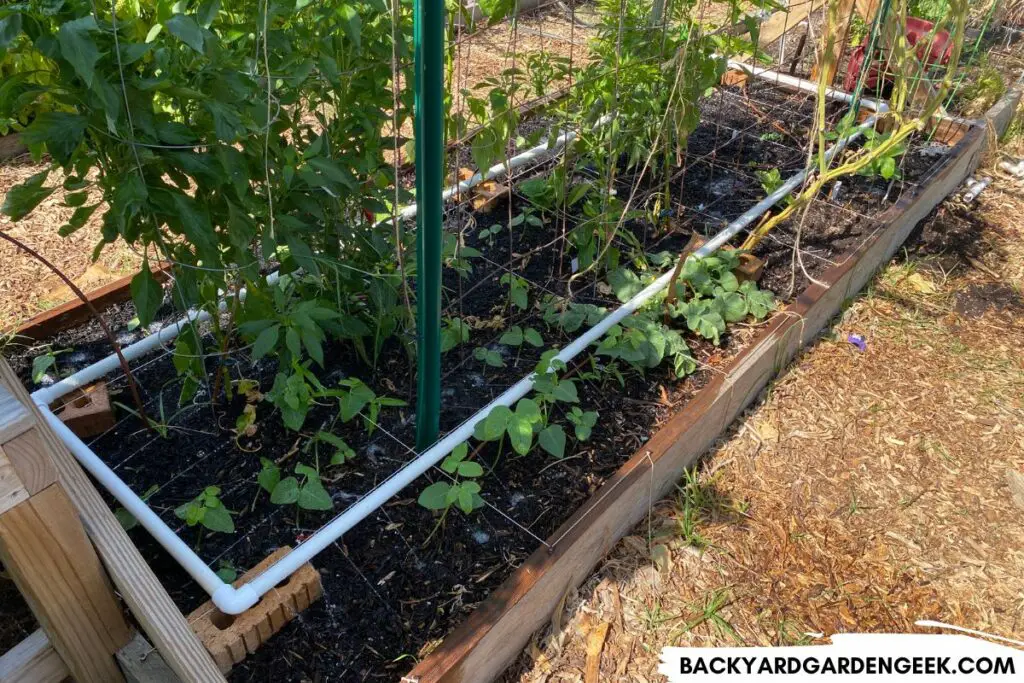
During cooler months, raised garden beds can also be impacted by soil temperature fluctuations, which can affect the growth of cool-season crops. To help mitigate this, put down additional mulch and use row covers, frost cloth, or other protective measures to insulate your raised beds and protect plants from cold temperatures.
8. Heat Susceptibility
Raised garden beds and the plants growing in them can be more susceptible to extreme heat, particularly in areas with hot, dry summers.
One of the main problems caused by high temperatures in raised beds is increased evaporation. This means that your soil can quickly become dry, which will not only cause plant stress but also invite the arrival of aphids, spider mites, squash bugs, and other common pests.
As I noted above, this can cause major problems for plants grown in small raised beds, planter boxes, containers, or the holes of concrete blocks. First, the soil will heat up quicker than the soil in larger raised beds. Secondly, the heat will stress your plants, making them more susceptible to both pests and diseases.
If you’ve had trouble with destructive garden pests, please know that I’ve written extensively about them.
You can learn more by checking out these articles about 2 of the pests hated most by gardeners: aphids and spider mites.
- 11 Destructive Ways That Aphids Harm Plants
- 12 Reasons Why Aphids Keep Coming Back + 3 Simple Fixes
- 21 Plants That Aphids Love to Attack + How to Stop Them
- 11 Proven Ways to Stop, Kill, and Get Rid of Spider Mites
- Using Neem Oil to Kill Spider Mites: A Complete Guide
- Will Spider Mites Spread to Other Plants?
In terms of mitigating the effects of extreme heat to keep your plants as healthy as possible, there are several things you can do:
- Lay down thick layers of mulch, at least 2-3 inches.
- Cover your raised beds with shade cloth. The only downside is that you’ll need a structural support system to hold the shade cloth in place.
- Use a soil moisture meter to test your soil, then water as needed.
For those who want to grow plants in concrete block holes, you might need to plant only heat-tolerant plants or make sure that you’re giving those plants a watering once every day or so.
9. Plant Unsuitability
While raised garden beds can be an excellent way to grow vegetables and herbs, there are certain plants that you shouldn’t grow in raised beds.
Some plants have sprawling growth habits that make them difficult to contain in raised beds (like loofah or tromboncino squash) while others require too much space to grow properly (like pumpkins and watermelons.
Others might even be too aggressive and take over the raised bed, choking out other plants. (I’m looking at you, mint!)
Here are some examples of plants that are not well-suited for raised garden beds:
- Barley
- Bee Balm
- Blackberries
- Blueberries
- Bottle Gourd Squash
- Comfrey
- Corn
- Hops
- Lemon Balm
- Loofah
- Malabar Spinach
- Millet
- Mint
- Oats
- Raspberries
- Rice
- Rye
- Sorghum
- Tansy
- Tromboncino Squash
- Watermelon
- Wheat
- Winter Squash
- Yarrow
When choosing plants for a raised garden bed, you’ll want to consider their growth habits and space requirements.
Smaller, compact plants such as herbs, lettuce, and spinach are well-suited for small pots or planter boxes, while larger plants such as tomatoes, peppers, and eggplants require larger raised beds or bigger containers.
10. Maintenance and Upkeep
While raised garden beds can be a great addition to any backyard or garden, they do require regular maintenance and upkeep, especially wooden beds.
Failure to properly maintain your raised beds can lead to a host of problems, including poor soil quality, weed growth, and pest infestations.

Here are some of the maintenance and upkeep tasks that are necessary to keep your raised beds in good condition:
- Weeding: Gardens are always prone to weed growth, so it’s important to lay down thick mulch layers and regularly remove any weeds that sprout up.
- Watering: Raised beds require regular watering, especially during hot and dry weather. If you don’t have an automated watering system of some kind set up, you’ll need to water your raised beds by hand, which can be time-consuming.
- Soil Amendments: Over time, the soil in your raised bed can become nutrient-poor. To keep your plants healthy, you’ll need to regularly add compost or other soil amendments to your raised beds.
- Pest Management: Stressed plants can be prone to pest infestations, so it’s important to regularly inspect your plants for signs of pests and take appropriate action if necessary.
- Wood Maintenance: If you’ve got wooden raised beds, you’ll want to inspect them for signs of rot or damage after 5 years or so. You may need to replace boards or even rebuild entire beds over time.
If you’re looking to minimize maintenance and upkeep, consider using modular metal raised beds, which are less prone to rot and damage than wooden raised beds.
I’ve got 1 Vego Garden bed in my backyard right now, plus 6 LuxenHome metal beds that fit in a narrow spot behind my garage.
However, even with metal raised beds, regular garden upkeep and maintenance are still necessary to ensure your plants are pest-free and growing as expected.
11. Replacement Costs
One of the potential downsides of raised garden beds is the cost of replacing them when they begin to deteriorate over time.
Wooden raised beds (even those made of redwood or cedar) are particularly prone to rot and decay, which means that you may need to replace them every 7-10 years depending on which wood type you’ve used.
Replacing a raised bed can be a time-consuming and expensive process. If you have a large raised bed or multiple raised beds, the cost of replacement can quickly add up.
In addition to the cost of materials, you’ll also need to factor in the time it takes to remove the old raised beds, rebuild the new beds, and refill them with soil.
Metal raised beds are generally more durable than wooden beds and will last much longer. While they may be more expensive upfront, the longer lifespan of metal beds means that they might actually be more cost-effective in the long run.
Despite their high costs, modular metal raised beds–such as those sold by Birdie’s, Vego Garden, Olle, and other online retailers–are particularly popular these days due to their durability and ease of assembly.
Water troughs sold by Tractor Supply Company are another great option for raised beds.
These are made of galvanized steel and are designed to hold water for livestock, but they can also make excellent raised beds as long as you drill plenty of drainage holes in the bottom. They’re also easy to move when empty and can be repurposed for other uses if you ever decide to stop gardening in them.
Overall, while replacement costs are a potential downside of raised garden beds, choosing a durable material such as metal can help minimize these costs over the long term.
12. Relocation Labor
One of the potential downsides of raised garden beds is the amount of work it takes to move them if you ever need to relocate them.
Whether you realized too late that you placed them in the wrong spot on your property or simply want to reorganize your garden layout, moving raised beds can be an annoying, labor-intensive process.
I once made the mistake of building a raised bed on a strip of grass beside my house without considering the fact that shade patterns could change as the gardening season wore on. It wasn’t until later in the year that I realized I had constructed my raised bed in an area that got full shade, and it required 3-4 hours of labor to move the bed to a sunnier location.
If you build raised beds in partial shade, that’s fine. You just don’t want to put them in any areas that get full shade.
To move a raised bed, you’ll need to first remove all of the dirt from the bed and store it elsewhere while you move the bed itself. Depending on the size of the bed and the amount of dirt it contains, this can be a significant amount of work.
Once the bed has been moved, you’ll need to refill it with your stored soil, which can also be a time-consuming process.
To avoid the need for any of this, you’ll want to carefully consider the placement of your raised beds before installing them.
I recommend tracking the sunlight and shade patterns once a month throughout the year so that you can ensure you’re not building raised beds in areas that are sunny during summer but shaded during fall, winter, and spring.
As you can likely tell by now, it’s best to install raised beds in permanent locations to avoid the need for relocation labor.
What Are the Advantages of Raised Garden Beds?
Despite their disadvantages, raised garden beds have all kinds of advantages, which can make it easier and more enjoyable to grow your own plants.
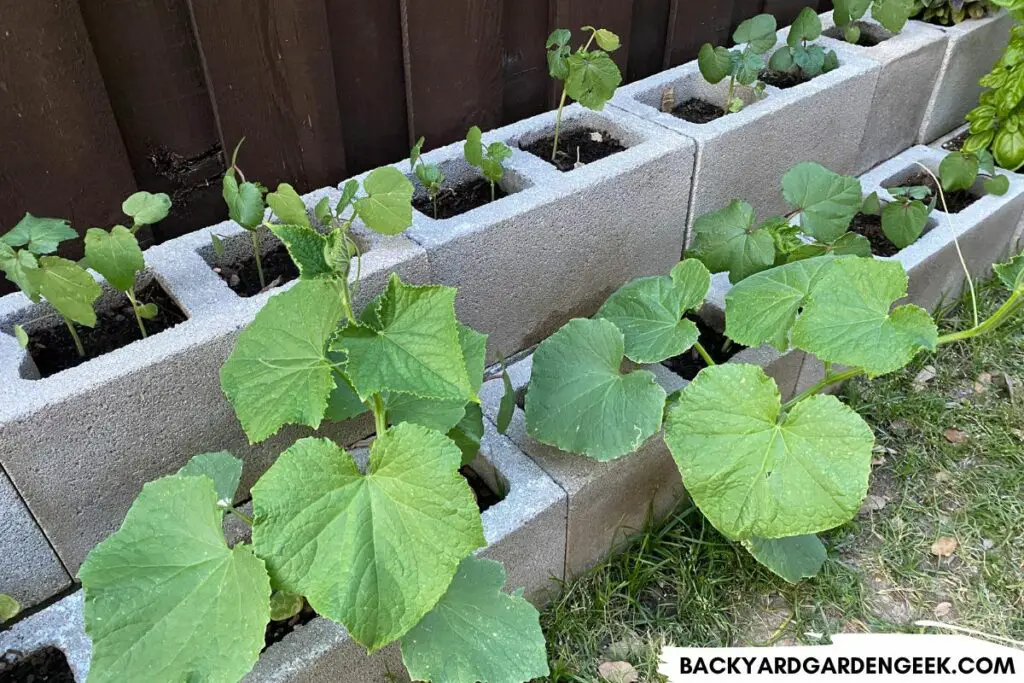
One of the biggest advantages of raised garden beds is your ability to easily amend the soil. Because the soil is contained within the raised bed, it’s much easier to add compost, manure, and other soil amendments without disturbing the surrounding areas. This means you can tailor your amendments to the specific needs of your plants, which can lead to healthier and more productive plants.
Raised garden beds can also offer better soil drainage than traditional garden beds. By elevating the soil, raised beds allow excess water to drain away more readily, which can help prevent root rot and other problems caused by waterlogged soil.
Additionally, you can customize the soil mix in your raised bed to promote better drainage, which can be particularly beneficial for those folks who live in wetter, rainier regions.
For those with mobility issues, raised garden beds offer an easier way to garden without the need to bend or kneel down. The raised height of the bed means that you can work at a more comfortable level, which can be particularly helpful for older gardeners or those with physical limitations.
Another advantage of raised garden beds is that they offer greater customization than traditional garden setups. You can choose the size and shape of your raised bed, as well as the materials used to construct it. This means you can create a raised bed that fits perfectly in your garden space and also matches your personal style.
Raised garden beds also make it easy to garden vertically, using trellises or cattle panels to support climbing plants like tomatoes, cucumbers, and beans. This can help maximize your garden space and increase your yield.
If you’d like to see some of what I’ve done in my rather small backyard, take a look at these articles:
- 32 Must-Try Vegetables for Your Raised Garden Beds
- Buying Tomato Plants vs. Growing from Seeds: Pros and Cons
- How Deep Should Raised Garden Beds Be for Tomatoes?
- Pros and Cons of Raised Garden Beds: Know Before You Grow!
Companion planting is another strategy that’s easy to implement in raised garden beds. By planting complementary plants together, you can help repel pests and increase yields.
For example, I like planting marigolds among my tomatoes and peppers since marigolds are good trap crops, and raised garden beds make it easy for me to group my plants together and experiment with different companion planting strategies.
The square foot gardening method, which involves dividing your garden bed into square-foot sections and planting each section with a different crop, is another strategy that works particularly well in raised garden beds. The defined boundaries of the raised bed make it easy to create the grid required for square foot gardening.
Finally, raised garden beds can help cut down on weeds. By elevating the soil and covering it in thick layers of mulch, raised beds make it harder for weed seeds to take root.
9 Mistakes to Avoid When Gardening in Raised Beds
Raised beds are an amazing way to grow all kinds of plants in your backyard, but you’ve got to avoid some common mistakes when doing so:
- Choosing the wrong spot: Choosing the right location is essential when it comes to raised beds. Avoid areas with poor drainage, heavy shade, and areas that are prone to flooding. Also, be sure to choose an area that receives a minimum of 4 hours of direct sunlight a day, although 6-8 hours is much better.
- Filling the bed with poor soil: The soil in raised beds is the foundation for healthy plants. Avoid using poor-quality soil that lacks nutrients or doesn’t drain well. Instead, opt for soil that’s loose, nutrient-rich, and well-draining or use hugelkultur methods to create a soil that’s great for plants.
- Overcrowding plants: It’s important to give your plants enough space to grow. Overcrowding plants will lead to competition for nutrients and water, stunted growth, and increased pest and disease problems.
- Forgetting about crop rotation: Crop rotation is essential for preventing soil-borne diseases and soil depletion. Plan ahead and rotate crops from year to year to keep the soil healthy and productive.
- Not watering enough (or too much): Raised beds require regular watering, especially during hot, dry weather. But be careful not to overwater your plants, which can lead to root rot and other problems.
- Neglecting to add compost: Compost is essential for building healthy soil and providing nutrients to your plants. Be sure to add good compost to your raised beds regularly, at least once per season.
- Not controlling pests: Plants are always vulnerable to pests–from aphids and armyworms to spider mites, stink bugs, or snails and slugs. Be sure to monitor your plants regularly for signs of pests and take action promptly whenever you see them.
- Not using mulch (or enough mulch): Mulch can help conserve moisture, suppress weeds, and regulate soil temperature. Don’t put thin layers down. Go with thicker layers to help your plants as much as possible.
- Not planning for the right size: Be sure to plan your raised beds carefully to avoid over or underestimating the space you need. Also, consider the height of your beds.
Obviously, I’m a big fan of growing plants in raised garden beds, but there are some downsides to doing so.
However, as long as you know about the downsides, you’ll be able to avoid some of the mistakes I made and build garden beds that’ll provide a perfect growing environment for your plants.
If you want to learn all I know about raised garden beds, I recommend checking out these related articles:
- 9 Tips to Ensure Proper Drainage in Raised Garden Beds
- 13 Must-Grow Herbs for Your Raised Garden Beds
- Filling Raised Beds with Just Compost: Should You Do It?
- Landscape Fabric Under Raised Beds: Is It Necessary?
- Putting Raised Beds on the Patio: Should You Do It?
- Should You Remove Grass Under Raised Beds?
